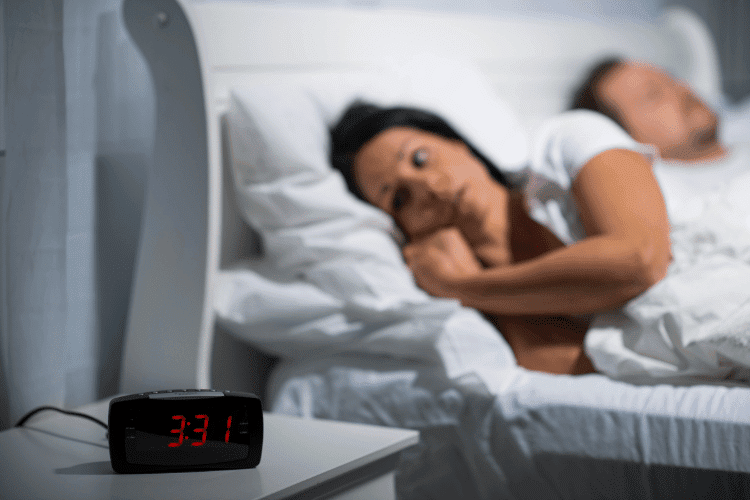In a typical lucid dream, you’re well aware that you’re dreaming and can control the narrative to some extent.
That sounds fun, but is lucid dreaming a gift? Can only a lucky few experience lucidity, or is it something we can all achieve if we try hard enough? Does it ever backfire?
I’ve wondered about all these questions for a while now and decided to look more into them.
In this article, we’ll explore whether lucid dreaming should be considered an extraordinary gift, a troublesome burden, or a skill to be approached with moderation.
Some people drop into a lucid dream every now and then, and a few even claim to be able to do it every night! But overall, having consistent lucid dreams seems to be a not-so-common skill.
For one, a meta-analysis of 50 years of research showed that around 55% of the population experienced at least one lucid dream in their lifetime. That makes it sound like a common phenomenon, but it’s worth noting that only 23% reported lucid dreaming once a month or more.
On a similar note, in a study of 153 Japanese students, 47% said that they experienced a lucid dream at some point. Yet, only 19% of the participants were considered frequent lucid dreamers.
You might find research with slightly different estimates, but odds are, lucid dreams will still be less common than normal dreams.
All in all, with incidence rates like these, it’s only natural that some folks would consider the lucid dreaming ability to be a gift.

While lucid dreaming comes more naturally to some people, research shows it can also be achieved through various induction techniques.
There are a bunch of lucid dreaming techniques out there, but the most common ones are:
What’s even more interesting is that scientists realized that they can induce lucid dreaming by stimulating the brain with a specific frequency of electricity. This method was effective enough to trigger what the participants would describe as lucid dreams 77% of the time!
Sure, the traditional induction techniques might come easier for some people than others. However, it seems like many people who don’t naturally experience lucid dreams could achieve lucidity if they get proper guidance.
There are plenty of reasons why someone would consider the lucid dream experience a special ability. Obviously, it’s a safe outlet for creativity and confronting fears in ways not possible in waking life.
That said, some uses are more common than others.
In a 2012 survey, more than 81% of the respondents picked having fun as their top “application” for lucid dreaming. Conquering nightmares by controlling the dream environments came second at 63.8%.
Lucid dreamers also reported using the experience to find creative inspiration (27.6%), solve problems (29.9%), and practice real-world skills (21.3%).
But that’s not all. Studies show links between lucid dreaming and desirable cognitive traits like enhanced insight, problem-solving, and field independence.
Keep in mind that greater field independence translates to stronger self-sufficiency and less reliance on external support!
While lucid dreaming might seem like a ton of fun, it’s not risk-free.
We still need more research to understand how frequent lucid dreaming affects us, but there are some potential downsides to consider, including:

We’ve talked about how the WBTB and MILD techniques can induce lucidity in the Rapid Eye Movement or REM sleep phases. The flip side here is that frequent lucid dreaming could interfere with the rest quality.
So, to have a bit of fun in a lucid dream, you might have to compromise your sleep duration. Unfortunately, broken sleep could bring along some not-so-pleasant symptoms like fatigue, increased stress levels, and irritability.
Some lucid dreamers experience false awakenings within the dream itself, and they can be really convincing.
Believing that you’ve awakened when you’re still asleep might not sound like a terrible thing, especially if you can control the dream.
However, it can create a state of confusion and anxiety once you actually wake up. So, frequent false awakenings could be a sign to scale back the lucid dreaming induction techniques.
For those with psychotic mental health conditions, lucid dreaming could pose a risk. It might cause hallucinations and blur the line between dreams and realities.
All in all, people struggling with derealization should use caution in practicing lucid dreaming techniques. It’s the sort of thing you want to discuss with your healthcare professional before you go all in.
Is lucid dreaming a gift? Well, it’s rare, fun, provides a creative outlet, and is associated with some possible cognitive traits.
All these perks make it look like quite a gift. It makes sense that people would put effort into inducing lucidity if they can’t achieve it naturally.
However, for lucid dreaming to be a true gift, it can’t come at the expense of sleep quality and mental stability.
If the dreams start negatively impacting your sleep schedule or sense of reality, it might be time to dial the induction techniques back a notch. Remember: moderation is key!